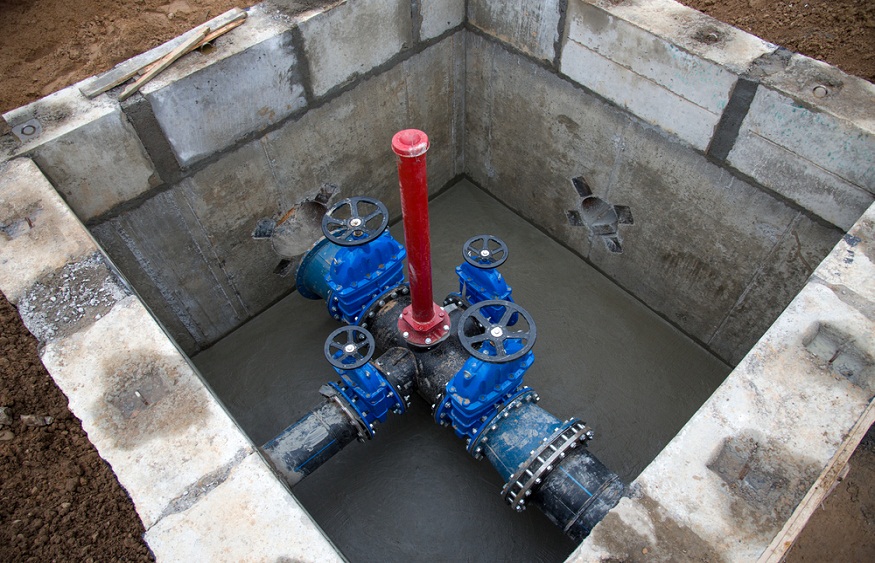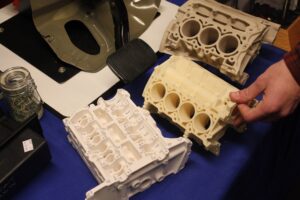Sewerage management remains a concern for Dubai, an area well known for its tall buildings and ongoing urban projects. As the population of the city increases at an increased rate, a proper system of sewage management can hardly be overemphasized. In this large network of sewers, the wastewater is pumped from low-lying areas to higher ground through the Sewer Lift Station. This article affords a robust review of the operation of these vital aspects of the gradual advancement of Dubai’s urban development.
Dubai’s Sewer Lift Stations: An Essential Infrastructure
For conventional gravity-based sewage systems, the terrain of Dubai poses a substantial difficulty. Sewer lift stations are essential to the city’s ability to maintain an effective and efficient sewage network because of their relatively flat topography and the necessity to carry wastewater over great distances. When the main sewer line is too deep for gravity flow to be feasible, these stations are crucial.
Unheralded heroes of Dubai’s wastewater treatment infrastructure are the lift stations. They put in endless hours to gather sewage from lower elevations and pump it up the system to higher places so that treatment facilities may receive it. Backflows, backups, and other health risks related to standing wastewater are all avoided thanks to this procedure.
The Workings of Sewer Lift Stations:
Essentially, gravity-fed systems have restrictions, which is why sewer lift stations are designed the way they are. Pumps, valves, a control system, and a wet well are usually included. An interim holding tank for incoming sewage is provided by the wet well. The force main—a pressurized line that forces wastewater upward—is created when the well’s wastewater reaches a preset level and the pumps begin to automatically operate.
These lift stations are positioned carefully to guarantee ideal flow across the complex sewage network in Dubai. A hybrid system that optimizes efficiency and minimizes energy consumption has been created by the city’s engineers by designing a network that strikes a balance between the need for lift stations and gravity-fed areas.
Sewer lift stations in Dubai are utilizing advanced technologies:
The wastewater management system of Dubai is a testament to its dedication to innovation. The city upgraded the functionality and dependability of its sewer lift stations by investing in cutting-edge technologies.
Variable frequency drives are a feature of contemporary lift stations in Dubai that enable diverse pump speeds to be set in response to the incoming flow. Lower operating expenses and longer equipment lifespans result from this technology’s significant reduction in energy usage and pump wear.
Supervisory Control and Data Acquisition systems and advanced sensors give operators access to real-time information on flow rates, pump performance, and possible problems. Reducing the chance of system failures permits proactive maintenance and quick reaction to any anomalies.
Dubai’s Changing Landscape: Issues and Solutions
The sewerage infrastructure in Dubai is being challenged by its continued growth. Urbanization is happening so quickly that lift station capacity needs to be upgraded and assessed regularly. In addition, careful planning is needed to incorporate new lift stations into the current network during the building of new residential communities and commercial areas.
The municipal authorities in Dubai have taken several creative measures to solve these issues, including:
As demand grows, it will be simpler to expand many of the newly constructed lift stations because of their modular architecture. With minimal impact on the current infrastructure, the city can swiftly adjust to shifting needs thanks to this flexibility.
Teams in charge of wastewater management in Dubai can anticipate equipment failures by using machine learning algorithms and data analytics. The lifespan of vital components is increased and downtime is reduced with this proactive approach.
A major emphasis is on enhancing lift station energy efficiency by Dubai’s sustainability objectives. This involves powering smaller stations with renewable energy sources like solar panels, as well as utilizing highly efficient pumps and control systems.
Materials resistant to corrosion are used in the construction of lift stations because Dubai’s environment is severe and includes salinity and high temperatures. As a result, there will be fewer regular replacements needed and longevity is guaranteed.
Sustainability and Environmental Factors:
Dubai takes serious environmental concerns into account while designing sewer lift stations, in addition to their practicality. To maintain its limited water supplies and safeguard its fragile desert habitat, the city understands the importance of effective wastewater management.
In light of this, sustainability has been included in the design of many of Dubai’s more recent lift stations.
One way to recycle wastewater is by using small-scale water recycling facilities in some sophisticated lift stations. This lets in for the treatment and reuse of a few wastewater for non-potable uses, such as panorama irrigation.
Noise reduction technology: Contemporary carry stations in Dubai are outfitted with modern-day noise discount generation to ensure non violent operation even in residential zones, thereby minimizing the impact on the encompassing surroundings.
Green construction Practices: To lessen their total environmental impact, lift station facilities are frequently constructed using sustainable materials and utilize green construction techniques like natural lighting and effective insulation.
Sewer lift stations play an important but frequently unseen role in the community. The municipality of Dubai has realized how crucial public knowledge is to keeping these measures in place. To lessen the burden on lift stations and the larger pumping sewage in Dubai network, educational programs have been started to teach locals about appropriate waste disposal techniques. These initiatives help the city’s wastewater management infrastructure last longer and operate more efficiently overall.
Technology enabling lift stations to extract energy from wastewater flows itself may be implemented in the future. This could result in some lift stations having net-positive or energy-neutral power usage.
The integration of sewer lift stations with other urban systems is expected to increase as Dubai pursues its smart city efforts. This would enable a more comprehensive management of water resources and infrastructure.
Conclusion:
Sewer lift stations, in summary, are vital—and frequently underestimated—to Dubai’s continued development as a contemporary, livable city. These vital parts of the wastewater treatment system are developing to meet the demands of Dubai’s fast urbanization via ongoing innovation, strategic planning, and a dedication to sustainability. Lift stations are an essential part of Dubai’s urban infrastructure, and as the city expands, its network of modern, effective lift stations will keep up with the city’s grand development plans.



